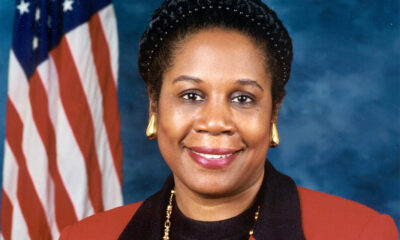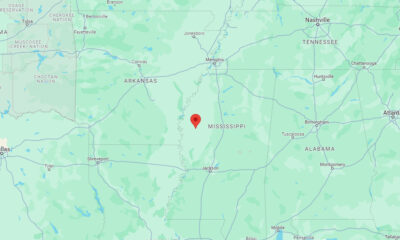Business
Playboy magazine founder Hugh Hefner dead at 91
Hugh Hefner, who founded men’s magazine “Playboy” in the 1950s and turned it into one of the world’s most recognizable brands, has died, the company announced on late Wednesday. He was 91 years old.
Hefner passed away on Wednesday while surrounded by loved ones at the Playboy Mansion in Los Angeles. He died of natural causes, according to a statement from Playboy Enterprises.
“My father lived an exceptional and impactful life as a media and cultural pioneer and a leading voice behind some of the most significant social and cultural movements of our time in advocating free speech, civil rights and sexual freedom,” said his son Cooper, the company’s chief creative officer.
Hefner is survived by his wife Crystal and four children: David, Marston, Cooper, and Christie, who served as the CEO of Playboy Enterprises for more than 20 years. “He will be greatly missed by many, including [his children] and all of us at Playboy Enterprises,” Cooper said.
Hefner, who was born in Chicago in 1926, graduated from high school in 1944 and enlisted in the U.S. Army, after which he served as an infantry clerk while drawing cartoons for a number of Army newspapers. He was discharged from service in 1946.
Then in his early 20s, Hefner enrolled at the University of Illinois and doubled up on classes to earn his bachelor of arts and a double minor in creative writing and art in 2.5 years. He also drew cartoons for the student newspaper The Daily Illini and edited the campus humor magazine Shaft, where he introduced a new feature called “Coed of the Month.”
Hefner went on to take a semester of graduate courses in sociology at Northwestern University where he wrote a term paper to examine U.S. sex laws. He also became friends with his classmate Mildred Williams and they married in 1949. The couple went on to have 2 children until their divorce in 1959.
Hefner initially worked as a copywriter for Esquire Magazine in 1950, but he left the magazine in 1952 after the company moved its offices from Chicago to New York and Hefner was denied a $5 raise request, which motivated him to start his own publication.
Hefner raised a total of $8,000 from 45 different investors to launch “Playboy” magazine, which was originally to be called “Stag Party.” Hefner produced the first edition of “Playboy” magazine in 1953, featuring a nude photo of Marilyn Monroe from her 1949 nude calendar and the issue sold over 50,000 copies.
The magazine became an instant sensation, selling more than a million copies a month by the end of the decade, outdoing rival magazine Esquire. After divorcing his first wife in 1959, Hefner became Playboy’s icon and he was known to socialize with the famous and wealthy, always in the company of young and beautiful women.
During this time, Hefner purchased the Playboy Mansion in Los Angeles and he opened the first Playboy Club. He also wrote a series of editorials known as “The Playboy Philosophy” which were published in the magazine.
Playboy continued to grow over the following years and became the best-selling and most influential men’s magazine in the world. By 1971, as the company built nearly two dozen Playboy Clubs, hotel resorts, and casinos, the magazine was selling seven million copies a month. The company also started modeling agencies and operated multiple media endeavors.
Hefner further hosted two talk shows called “Playboy’s Penthouse” and “Playboy After Dark.” Both programs were set in a bachelor pad where Playboy Playmates would sit down and talk about various topics with Hefner and special guests.
But despite its success over the previous years, Playboy Enterprises suffered during the recession in the mid-1970s. The company eventually separated itself from businesses that weren’t doing as well, such as their clubs and hotels.
Hefner permanently moved from Chicago to Los Angeles in 1975, during which time he also became involved in the reconstruction of the iconic Hollywood sign, which earned him a star on the Hollywood Walk of Fame. In 1978, Hefner also launched the annual Playboy Jazz Festival which featured some of the world’s best jazz musicians.
Hefner suffered a stroke in 1985 that served as a wake-up call and led him to make changes in his life. He quit smoking and began a more healthy lifestyle. He also married girlfriend Kimberly Conrad, with whom he went on to have two sons, Marston and Cooper. The two separated after 9 years of marriage.
In 2005, the hit reality TV show “The Girls Next Door” premiered on E! Entertainment. The show took a behind the scenes look at the lives of Hefner and his various girlfriends, who were living with him at the Playboy Mansion.
During this time, Hefner became close with Crystal Harris, who was Playboy’s “Playmate of the Month” in December 2009 and went on to appear on “The Girls Next Door.” Hefner proposed to her on Christmas Eve 2010 and the two were supposed to get married in June 2011, but Harris had a “change of heart” and called off the wedding just days prior.
At this time, Harris was already featured on the cover of Playboy, which read: “Introducing America’s Princess, Mrs. Crystal Hefner.” It was eventually covered with a sticker that said “Runaway Bride,” but the two later reconciled and married during a small private ceremony on New Year’s Eve 2012.
Although Hefner became less involved with Playboy’s contents in his final years, he stayed on as the magazine’s editor-in-chief.
Playboy dropped nudity from its website in 2014 and controversially announced in October 2015 that it had also decided to stop publishing nude photos in its magazine, saying that “every sex act imaginable” is now just “one click away” and for free. But the company reversed the change in February, calling its decision to end nudity a “mistake.”
With the rise of the internet and online pornography, Playboy magazine’s circulation in the U.S. had been falling for years, dropping from 5.6 million in 1975 to 800,000 in 2015, when the company announced its decision to steer away from nude photos. Its circulation has since dropped to 474,000 as of July 2017, according to figures from the Alliance for Audited Media.

-

 World1 day ago
World1 day agoU.S. and China report 3 more human cases of bird flu, UN calls for urgent action
-

 Politics7 days ago
Politics7 days agoU.S. Rep. Sheila Jackson Lee dead at 74
-

 Legal7 days ago
Legal7 days agoFlorida man arrested for threatening to kill Trump and Vance
-

 World1 week ago
World1 week ago7.4-magnitude earthquake hits northern Chile
-

 Legal5 days ago
Legal5 days agoAt least 19 people shot, 3 killed, outside Mississippi nightclub
-

 World1 week ago
World1 week agoCyanide found on tea cups after 6 people die at Bangkok hotel
-

 Legal7 days ago
Legal7 days agoTexas Amber Alert: 2 children last seen in Bastrop County
-

 Legal1 week ago
Legal1 week agoKansas Amber Alert: Jaxon Halley abducted in Kansas City



